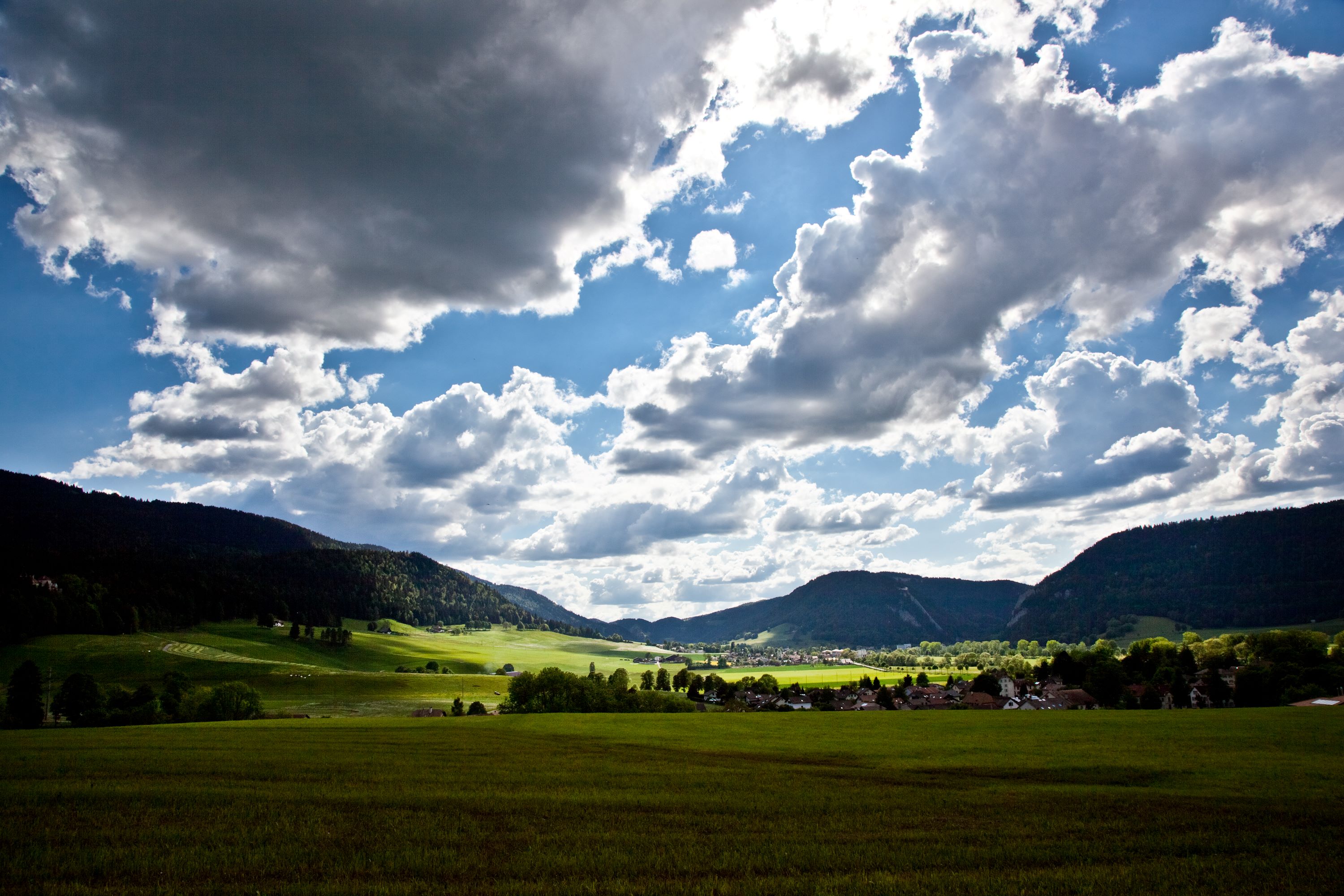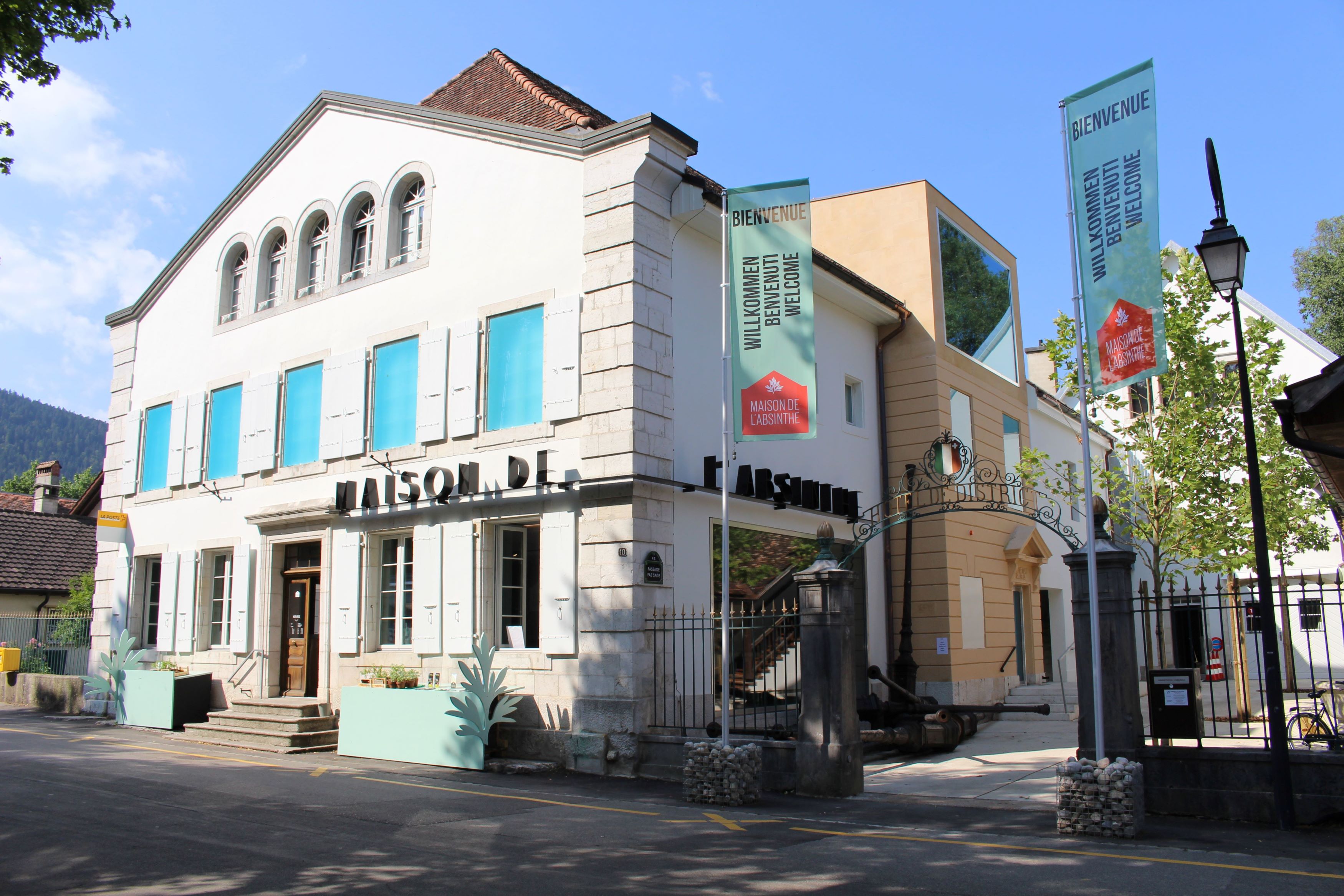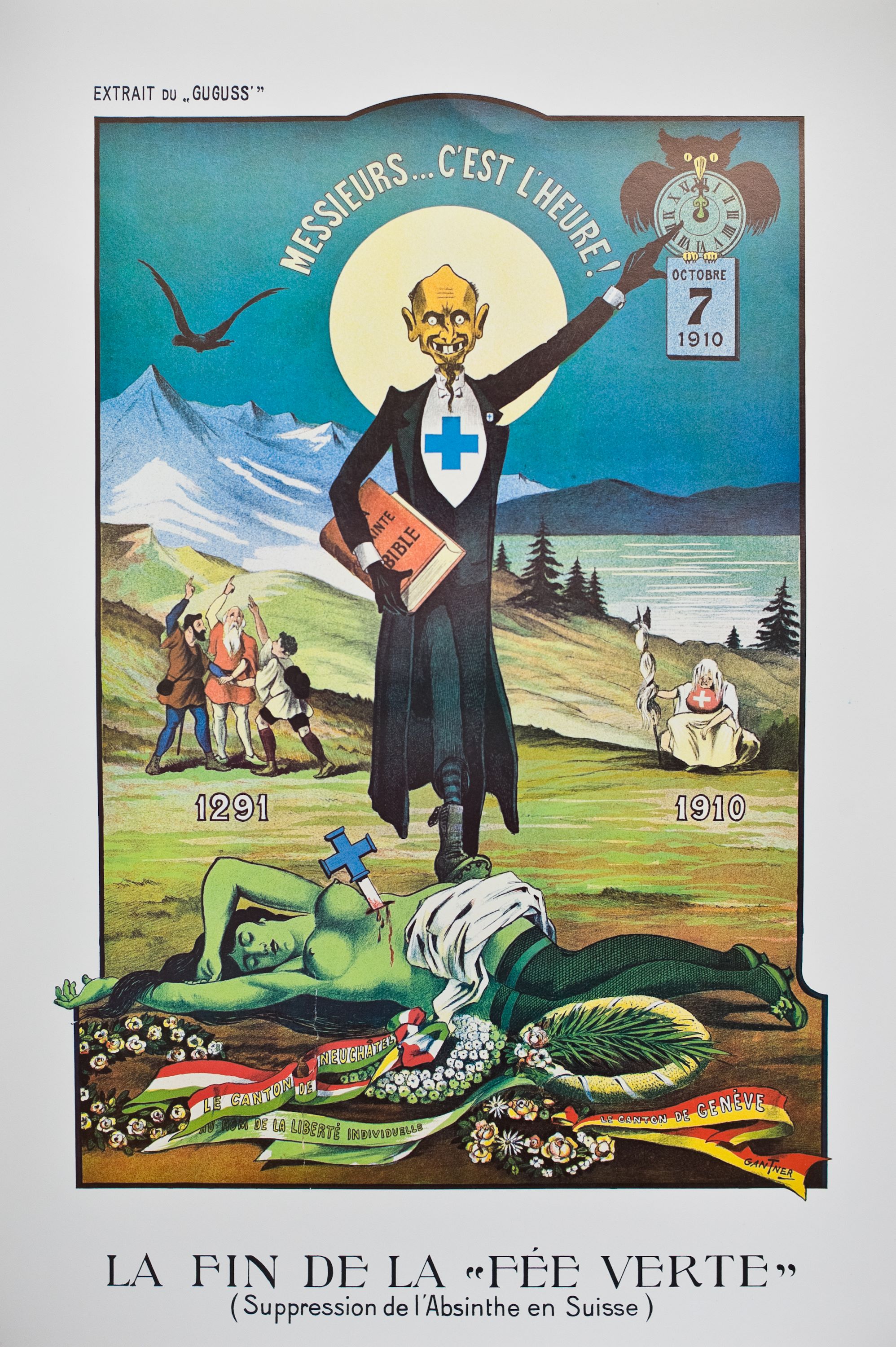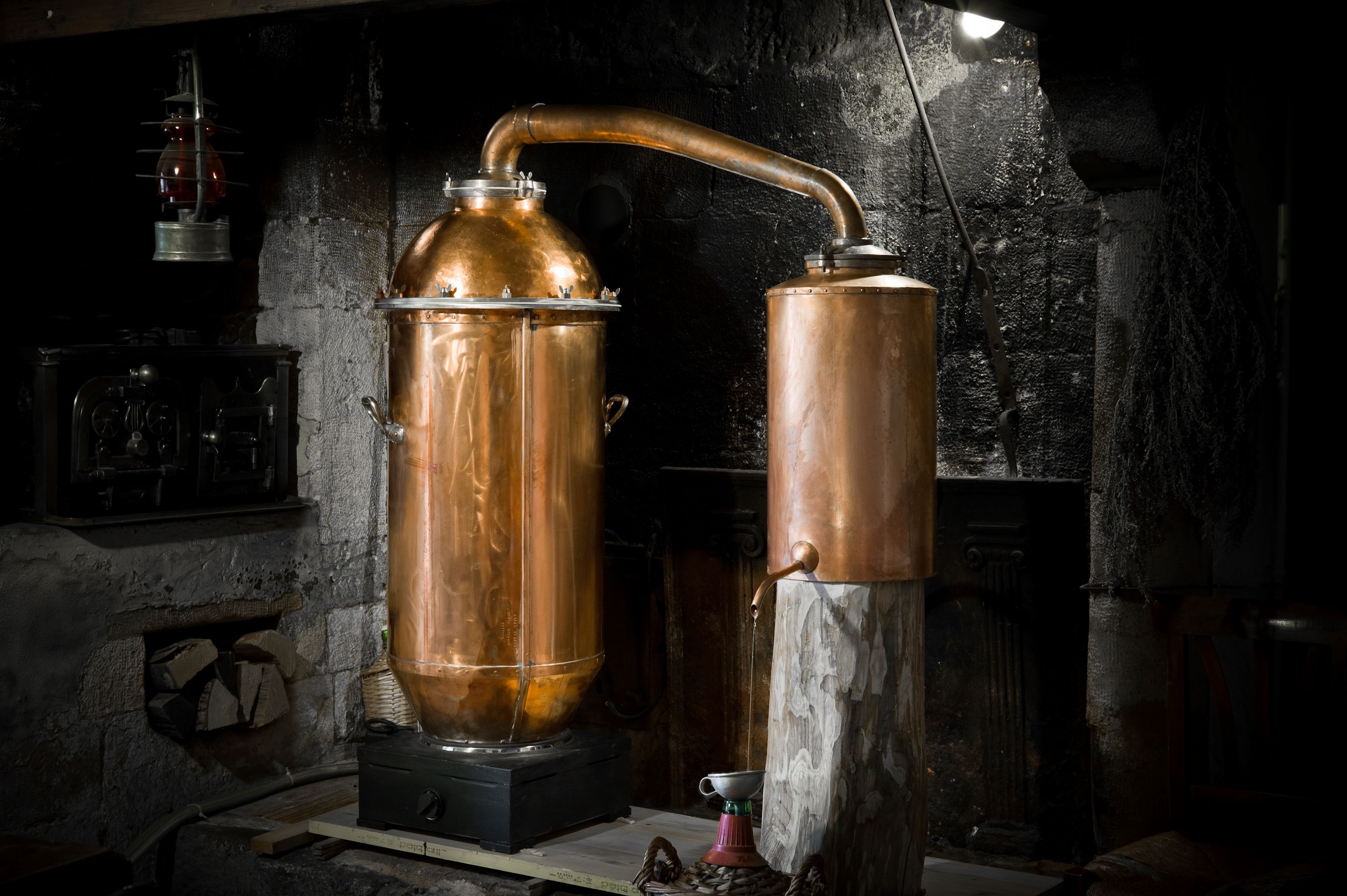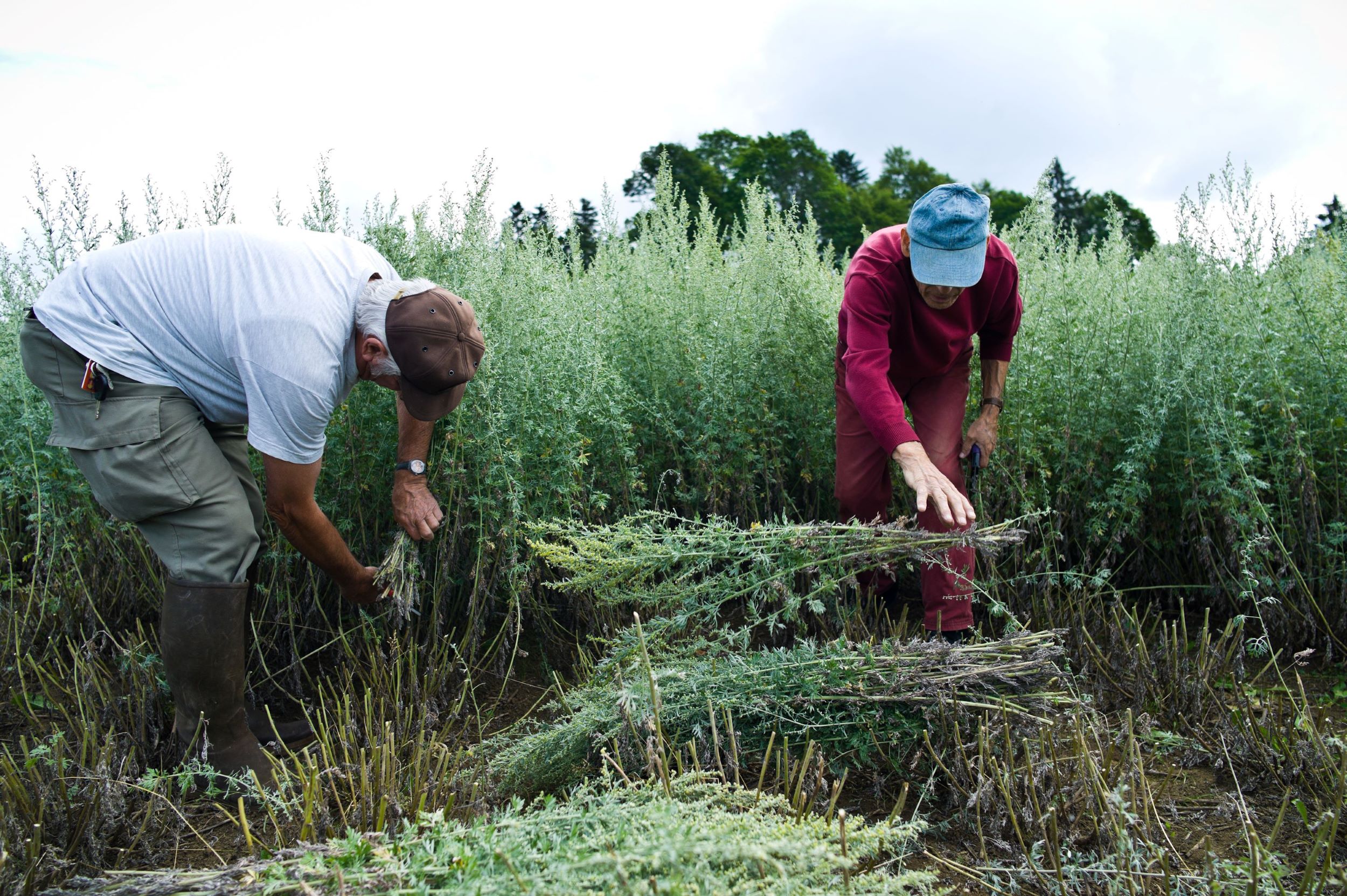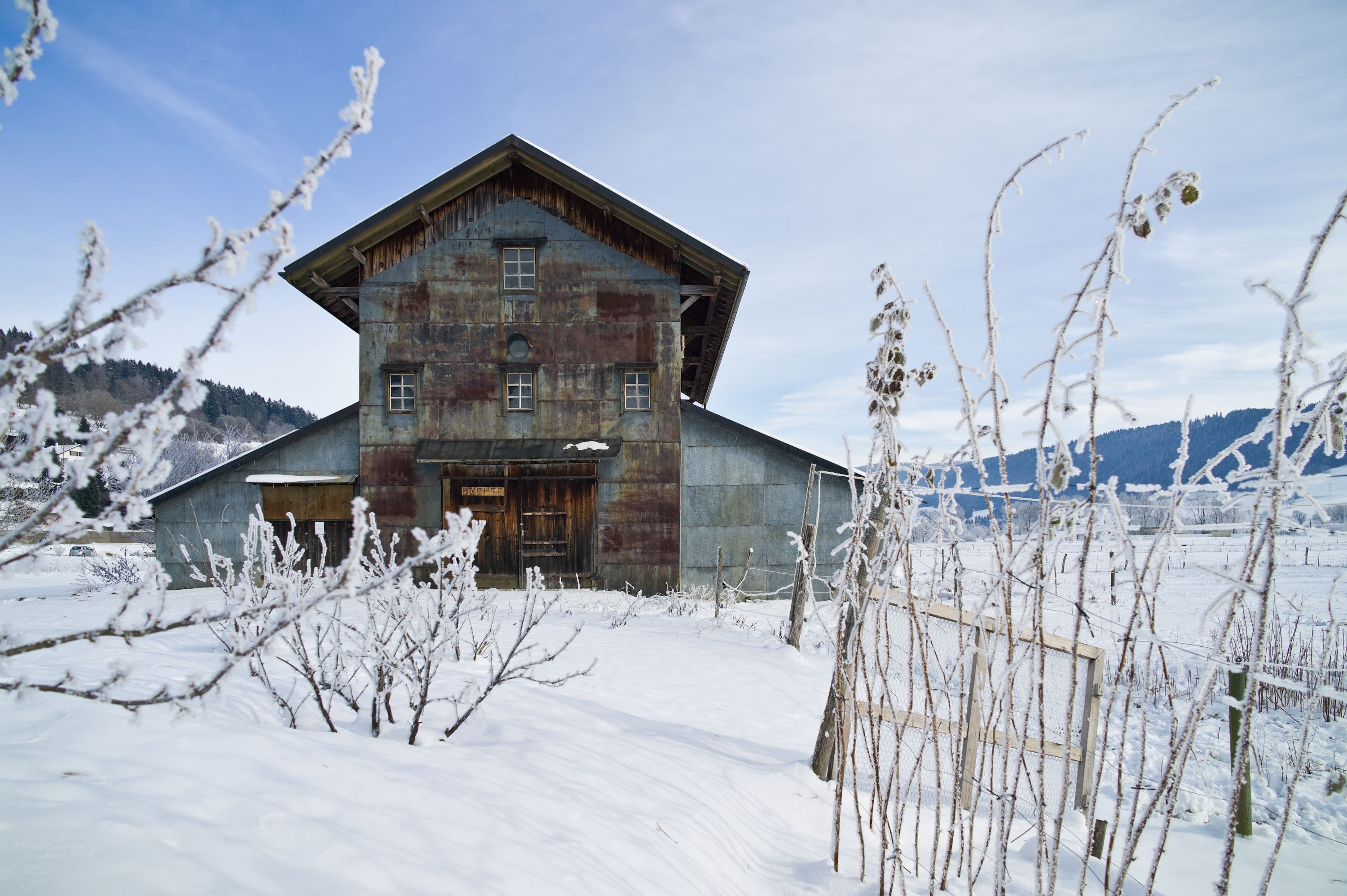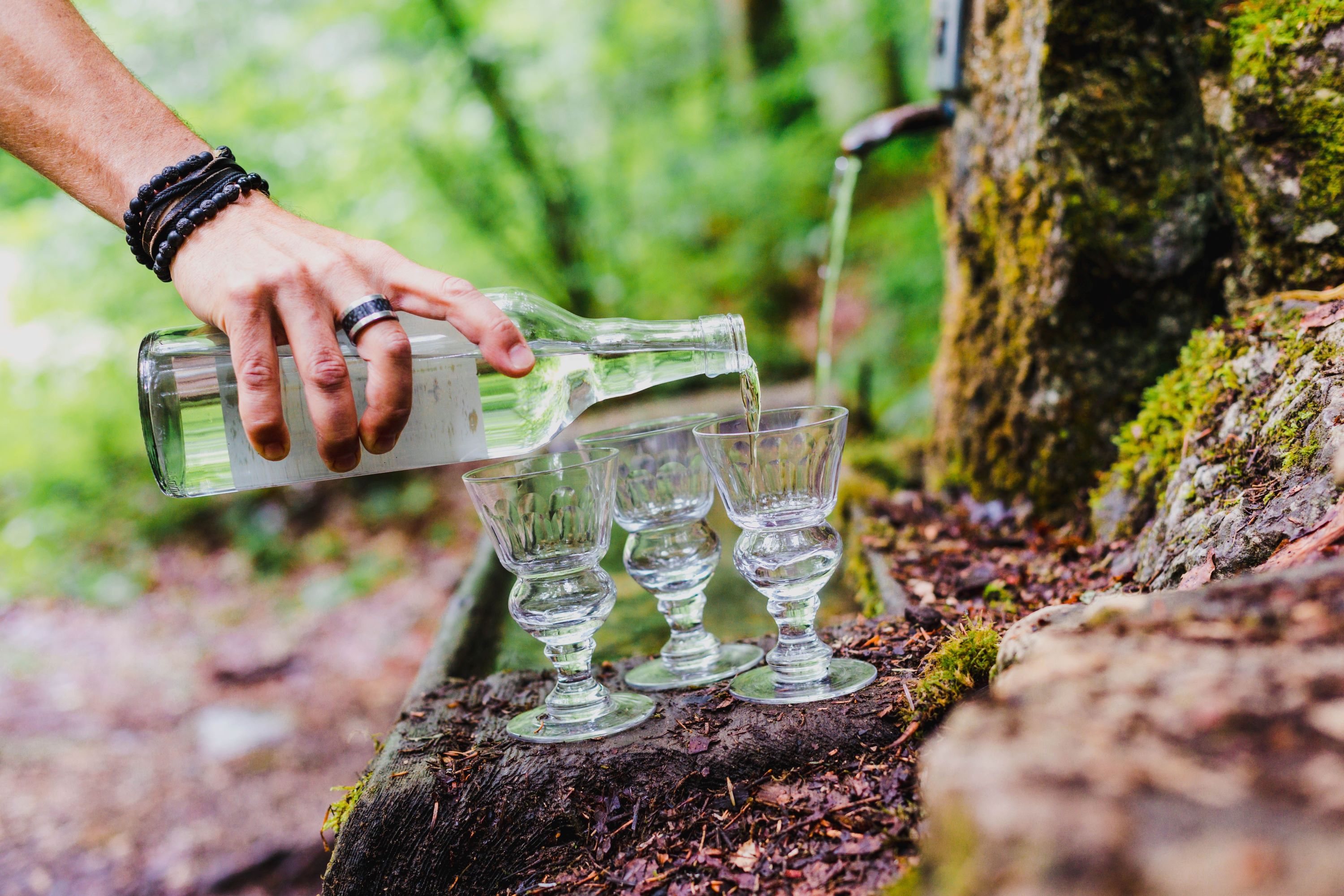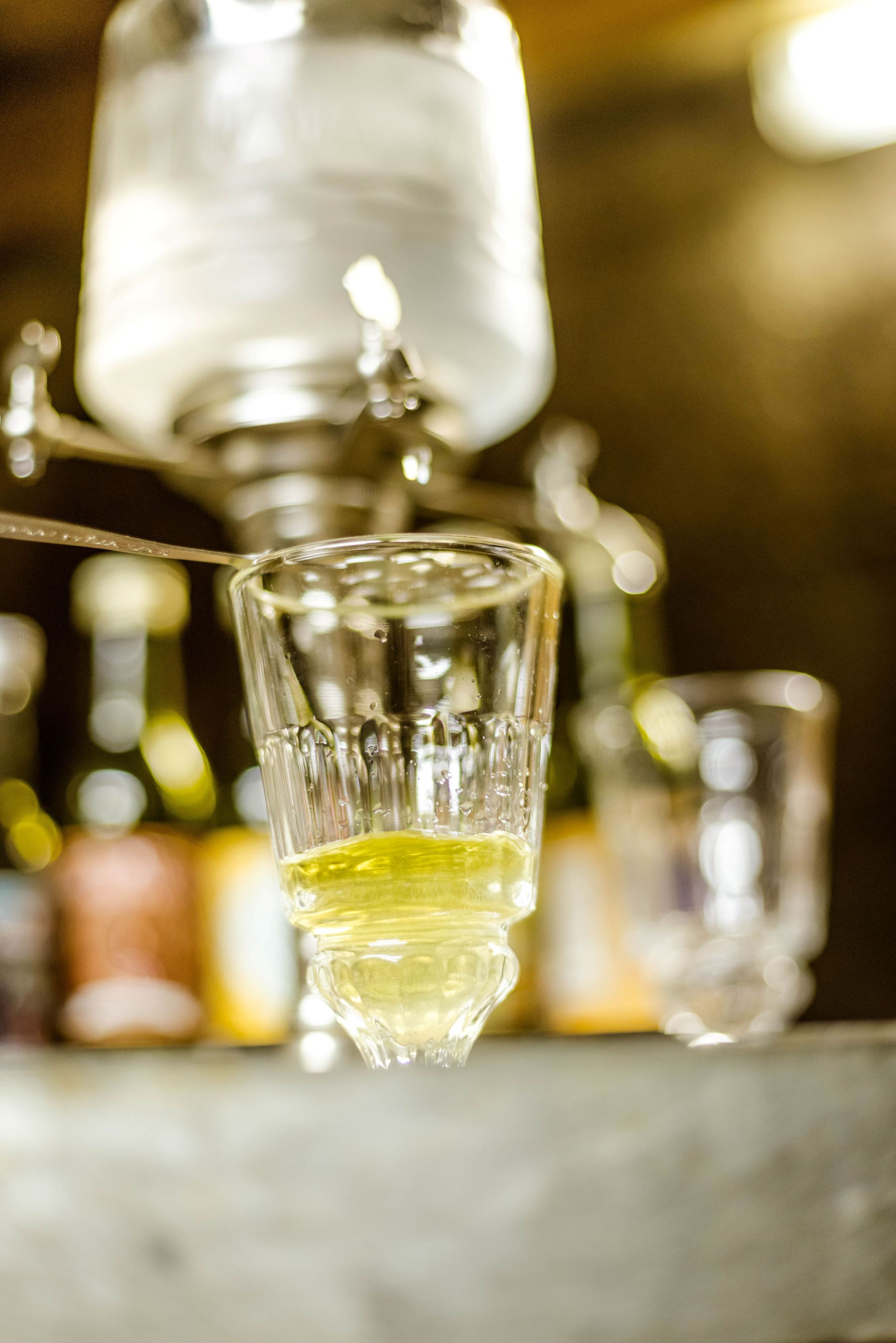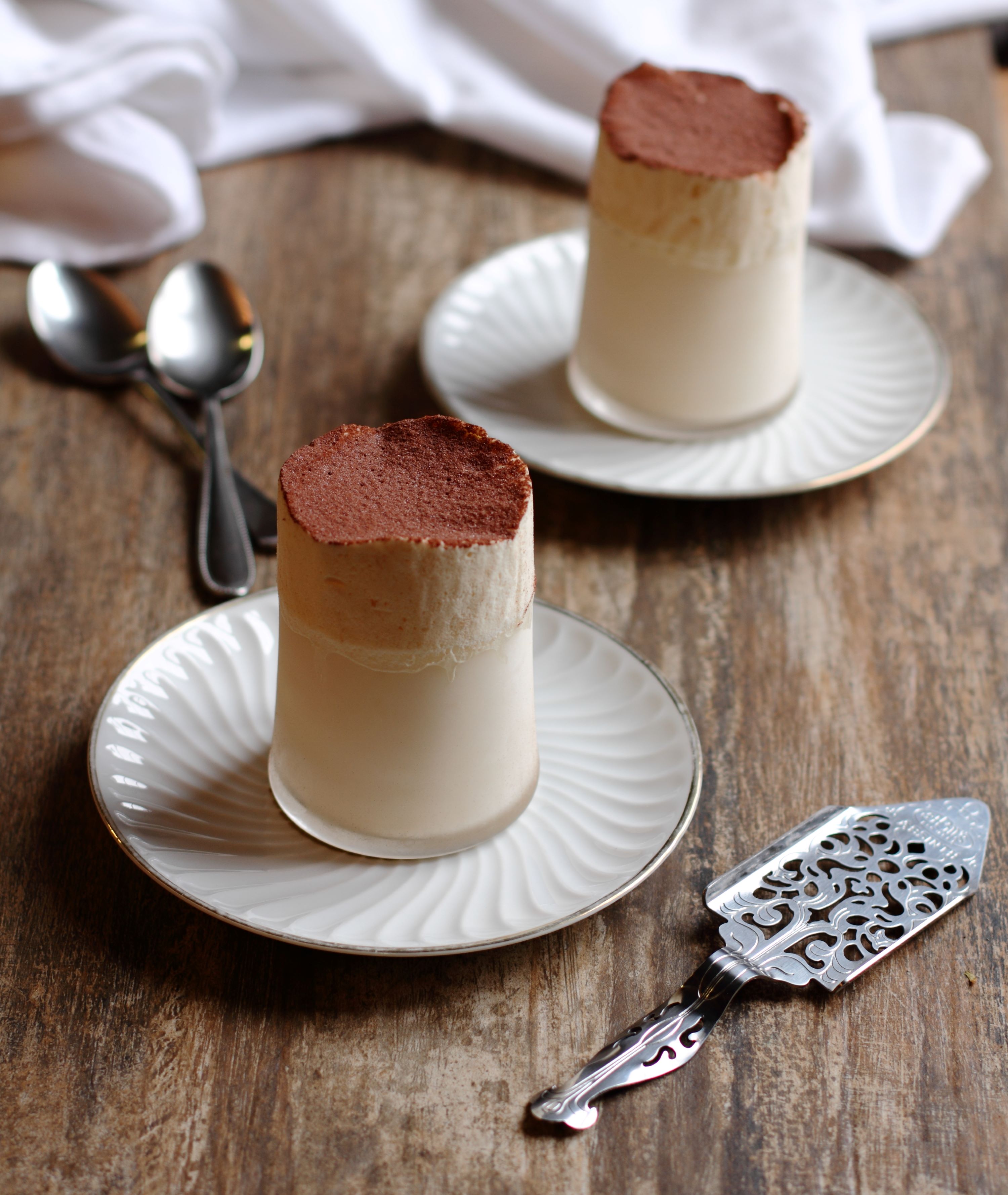Absinthe originated in Couvet in Switzerland’s Val-de-Travers in the mid-18th century and is testament to the region’s rebellious and strong-willed character. After experiencing tremendous growth in the 19th century, absinthe was banned in 1910, driving it underground and lending it something of a mythical status, thanks to the tenacity and resolve of the local people who continued to distil, sell and drink it in secret. Because the Fée verte or ‘Green Fairy’ is more than just an aperitif, and certain mysteries and rituals around its consumption still exist today. One such tradition is the fontaines froides where bottles of absinthe are sometimes hidden close to fountains in the forest. While the practice of placing a sugar lump on a perforated spoon is dying out, tasting rituals are an integral part of the tradition: a flared glass which helps release the spirit’s subtle flavours, a fountain filled with ice-cold water that is dripped over to gradually turn the distilled alcohol cloudy, the conviviality and enjoyment of a shared age-old tradition. Each of these steps plays a part in making absinthe more than just a drink.
When it was legalised again in 2010, the ‘Green Fairy’ regained its rightful place as a tradition at the heart of a region’s identity, which still provides a livelihood to around thirty distillers, some of whom also grow the plants used in the recipes. Following the restoration of the absinthe drying shed in Boveresse by the regional museum and the launch of the ‘Fête de l’absinthe’ (now ‘Absinthe en fête’) in 1998, the Maison de l’absinthe museum – which innovatively links culture, economy and tourism – opened in 2014.


